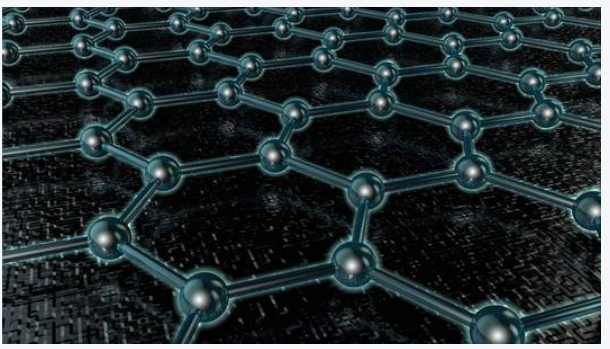Exporting China’s Antibacterial Graphene Technologies: Market Opportunities and Global Partnerships
Introduction
As the demand for hygienic materials grows globally—spurred by rising concerns over superbugs, pandemics, and urban health—China’s graphene industry is stepping into the spotlight. With its massive production base, active national R&D programs, and growing number of certified antibacterial applications, China is not only deploying graphene oxide (GO) domestically but also positioning itself as a key exporter of antibacterial graphene technologies.
 g
g
This article explores China’s strategy to bring its graphene-based coatings and materials to international markets, including major export regions, trade certifications, strategic alliances, and emerging opportunities under global health and smart infrastructure initiatives.
1. Why Global Markets Are Seeking Antibacterial Graphene Solutions
In the post-COVID world, surface hygiene is a top priority across sectors:
-
Healthcare: Hospitals and long-term care facilities demand non-toxic antimicrobial coatings.
-
Transport: Public touchpoints like handles, screens, and seats need continuous disinfection.
-
Hospitality: Hotels and restaurants require solutions that are invisible, long-lasting, and aesthetic.
-
Education: Schools are adopting antimicrobial upgrades for desks, labs, and shared tools.
Graphene oxide (GO), with its chemical-free, passive antimicrobial mechanism, aligns perfectly with these demands. Its durability, safety, and eco-friendliness are attracting attention in both developed and developing markets.
2. Leading Chinese Companies in Exporting Graphene Coatings
Several manufacturers in China are actively exporting antibacterial GO materials and coatings, either directly or through OEM/ODM partnerships:
| Company Name | Product Category | Export Regions |
|---|---|---|
| GrapheneRich NanoTech (宁波烯丰) | GO coatings, dispersions, treated laminates | Southeast Asia, EU, Brazil |
| The Sixth Element (第六元素) | Antibacterial GO films and powders | Germany, South Korea |
| TimesNano (时代纳米) | Sprayable GO solutions for textiles and plastics | Middle East, India |
| Hangzhou Gaoxi Tech | Medical-grade GO coatings for PPE and furniture | Africa, Eastern Europe |
3. Target Export Markets and Use Cases
A. Southeast Asia
-
Urban hospitals upgrading for pandemic resilience
-
Smart building initiatives in Singapore, Malaysia, Thailand
-
Collaboration with property developers and hospital equipment suppliers
B. European Union
-
Interest in green, REACH-compliant antimicrobial materials
-
Demand for smart, CE-certified coatings in elder care facilities
-
Public procurement projects in schools and government buildings
Chinese companies are actively seeking CE, RoHS, and ISO 22196 certifications to expand access.
C. Middle East & Africa
-
Airport and transit systems looking for low-maintenance hygiene coatings
-
Projects under China’s Belt & Road Initiative (BRI) that include smart hospitals and clean-tech public buildings
-
Strong demand for affordable, scalable antimicrobial solutions for local clinics and classrooms
4. Certifications and Export Readiness
To succeed globally, Chinese graphene coating exporters are aligning with key standards:
| Certification | Purpose | Status in China |
|---|---|---|
| ISO 22196 | Antimicrobial efficacy on plastics and non-porous surfaces | Widely adopted |
| ASTM E2180 | Antimicrobial testing of hydrophobic materials | In testing at multiple labs |
| REACH (EU) | Registration of chemicals for EU market | Some exporters REACH-ready |
| CE Marking | Product safety for EU | In progress via EU partners |
| GMP Certification | Medical-grade production standards | Applied by GO coating firms |
Many exporters now offer dual-language MSDS sheets, testing reports from accredited labs, and product brochures tailored for overseas clients.
5. International Collaborations and Licensing
Chinese graphene firms are increasingly working with:
-
Foreign universities for validation and co-development
-
OEM clients in packaging, coatings, and consumer electronics
-
International health organizations for pilot projects in schools and clinics
Example Partnerships:
-
Brazil: Joint venture to supply GO-based wall paints for public clinics
-
Kenya: Pilot with NGO to deploy GO-coated desks in schools
-
UAE: Contract with real estate firm for GO-treated surfaces in luxury properties
6. Belt and Road Synergies
As part of China’s Belt and Road Initiative (BRI), antibacterial graphene technologies are bundled into:
-
Smart hospital construction packages
-
School modernization kits
-
Public transit hygiene retrofits
GO coatings are now listed as part of government-supported “export-ready health-tech materials”, often subsidized for BRI partner countries.
7. Key Challenges for Global Expansion
While the potential is huge, challenges remain:
-
Regulatory hurdles: Differing regional approvals and lack of global consensus on nanomaterial labeling
-
Customer education: Many clients are unaware of graphene’s passive antimicrobial benefits
-
Shipping and handling: GO coatings, especially in dispersion form, require special packaging and labeling
-
Intellectual property (IP): Need to protect process innovation when licensing overseas
These are being addressed through industry alliances, joint testing initiatives, and customized training materials for foreign buyers.
8. Future Outlook
The export of Chinese graphene antibacterial coatings will benefit from:
-
International standard alignment: Collaborative work with ISO, IEC, and WHO
-
Blockchain-based traceability: Verifying coating authenticity and antimicrobial efficacy
-
Integration with smart city platforms: Linking surface hygiene to IoT ecosystems
-
Custom solutions: Region-specific designs (e.g., humidity-resistant for SE Asia, UV-resistant for Middle East)
As urban hygiene becomes a non-negotiable in global infrastructure planning, Chinese companies with strong production, safety validation, and export readiness will lead.
Conclusion
Graphene oxide antibacterial coatings represent one of China’s most promising high-tech exports in the post-pandemic era. By aligning with global safety standards, forming strategic alliances, and focusing on high-impact use cases like schools, hospitals, and transit systems, Chinese manufacturers are reshaping global expectations around what surface hygiene can look like.
In the near future, Chinese-made GO coatings may quietly protect millions of people worldwide, from hospital wards in Berlin to school desks in Nairobi—a silent shield born from carbon atoms and crafted through innovation.

